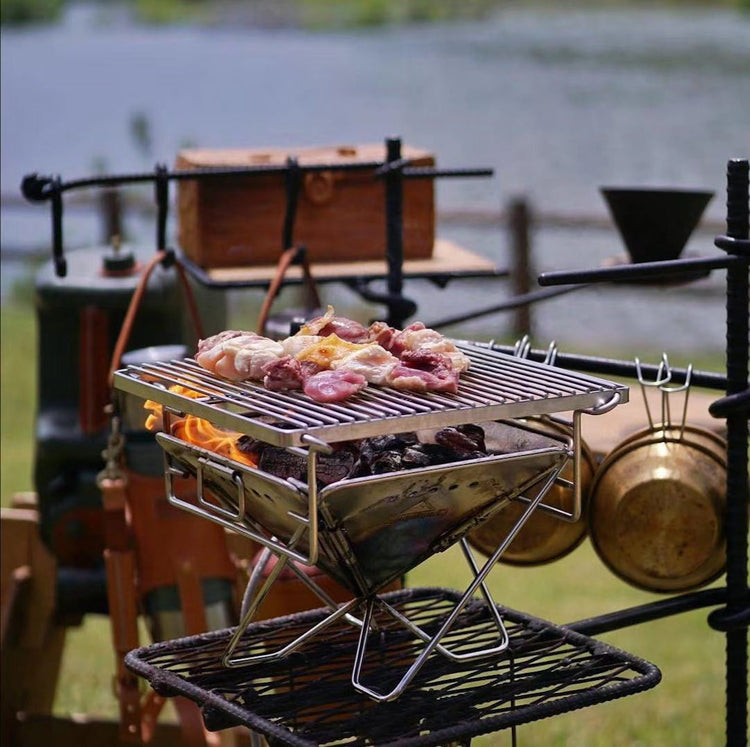Introduction
Camping in cold weather presents unique challenges, especially when it comes to cooking. Low temperatures can affect fuel performance, ignition, and overall stove efficiency. In this guide, we’ll explore the best camping stoves for cold weather, what features to look for, and tips to keep your stove running efficiently in winter conditions.
What to Look for in a Cold-Weather Camping Stove
*1. *Fuel Type Matters
-
Propane*: Performs well in cold weather but can lose efficiency in extreme conditions.*
-
Butane*: Less effective in freezing temperatures.*
-
Isobutane-Propane Mix*: Offers a balance between portability and cold-weather performance.*
-
Liquid Fuel Stoves (White Gas)**: The best option for extreme cold, as they maintain consistent pressure.
*2. *Pressure Regulation
-
Look for stoves with built-in pressure regulators to maintain consistent heat output.
*3. *Wind Resistance
-
Choose a stove with wind shields or built-in wind-resistant designs to prevent heat loss.
*4. *Portability and Weight
-
Ultralight backpackers may prefer compact isobutane-propane stoves.
-
Campers in extreme cold should prioritize liquid fuel stoves, even if they’re slightly heavier.
Top 5 Camping Stoves for Cold Weather
1. Campingmoon XD-3-NE Portable Stove* (Best Overall)*
-
Fuel Type*: Isobutane-propane mix*
-
BTU Output*: 10,000 BTU*
-
Features*: Wind-resistant, high-pressure regulator, compact design*
-
Pros*: Lightweight, great for backpacking, reliable in cold weather*
-
Cons: Slightly smaller burner size
2. MSR WhisperLite International* (Best Liquid Fuel Stove)*
-
Fuel Type*: White gas, kerosene, unleaded gasoline*
-
BTU Output*: 10,500 BTU*
-
Features*: Multi-fuel compatibility, excellent for extreme cold*
-
Pros*: Works in sub-zero temperatures, durable*
-
Cons: Requires priming, heavier than canister stoves
3. Jetboil Genesis Basecamp System (Best for Group Cooking)
-
Fuel Type: Propane
-
BTU Output: 10,000 BTU per burner
-
Features: Dual-burner system, compact foldable design
-
Pros: Excellent simmer control, wind-resistant
-
Cons: Bulky for solo campers
4. Snow Peak LiteMax Titanium Stove (Best for Ultralight Backpacking)
-
Fuel Type: Isobutane-propane mix
-
BTU Output: 11,200 BTU
-
Features: Ultralight (1.9 oz), titanium construction
-
Pros: Super lightweight, efficient
-
Cons: Struggles in extreme cold without wind protection
5. Coleman Dual Fuel Stove (Best Budget Option)
-
Fuel Type: White gas, unleaded gasoline
-
BTU Output: 7,500 BTU
-
Features: Dual-fuel compatibility, rugged build
-
Pros: Affordable, versatile
-
Cons: Slower boil time in extreme cold
Cold-Weather Camping Stove Tips
-
Keep fuel canisters warm by storing them inside your sleeping bag before use.
-
Use a windscreen to prevent heat loss.
-
Preheat liquid fuel stoves to ensure smooth ignition.
-
Choose the right cookware: Wide-bottom pots maximize heat transfer.
Conclusion
Selecting the right camping stove for cold weather depends on your needs. If you’re backpacking, the Campingmoon XD-3-NE is a great lightweight option. For extreme cold, a liquid fuel stove like the MSR WhisperLite International is unbeatable. Make sure to prepare for winter conditions by choosing the right fuel type, using wind protection, and keeping your fuel warm.
Which camping stove do you prefer in cold weather? Let us know in the comments!



